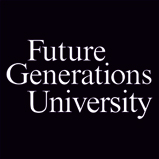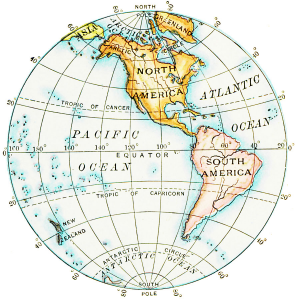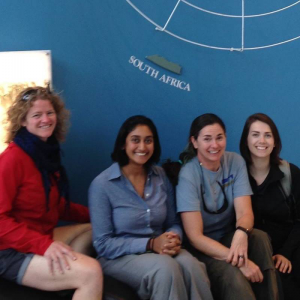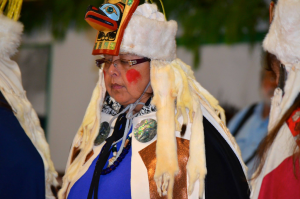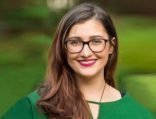Did you know that upon graduating, every Future Generations University alumni joins a global network of social change practitioners from around the world? Within Future Generations Center for Research and Practice, alumni belong to 3 regions (Asia, Africa, and the Western Hemisphere), and are each represented on the Board of Trustees by one of their own.
This week, the alumni representative for the Western Hemisphere, Ellen Romm Lampert, gives us an introduction to some of its diverse members and their work!
Hi! My name is Ellen Romm Lampert, and I am presently the Future Generations representative for the wonderful and diverse Western Hemisphere Alumni.
Although the Western Hemisphere Alumni group has the smallest number of members, we have by far the largest geographical area. Just look at a map! Western Hemisphere Alumni hail from North America, the Caribbean, Central America and South America, including Canada, the U.S., Nicaragua, Haiti, Guyana, Peru, and Bolivia. We speak English, Spanish, French, and quite a few localized languages, as well. This blog introduces a few of our very dynamic female alumni. A future post will introduce some of our male alumni.
Meet Yamini Bala
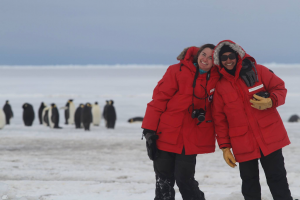 |
| Yamina in “Big Red,” pictured right, with all of her new friends! |
Yamini is originally from Upstate New York. At present she lives in Chicago and works as the administrator for three Montessori pre-schools, while considering what to do next. Yamini completed the Future Generations Masters degree in Applied Community Change in 2007, graduating in Bhutan. For a brief period she ran her own very innovative high school in Chicago, and then, in October of 2014…Yamini joined the University of Alaska Fairbanks research team on the Velvet Ice Expedition, to do fieldwork on the WAIS (West Antarctic Ice Sheet). Yamini became part of the team through PolarTREC (Teachers and Researchers Collaborating), a program which takes teachers and places them with scientists in real, multi-week research projects in the polar regions. The concentration for Yamini’s team was to focus on the microstructures that comprise ice crystals in the WAIS, putting down instruments in the bore hill. Yamini’s additional tasks were to produce a K-12 curriculum in relation to the team’s research and to write blog posts documenting the trip.
In December 2014, Yamini’s team met up at the Antarctic Center in Christchurch, New Zealand, where they were issued ECW (Extreme Cold Weather) gear that included a 20- lb. “Big Red,” the Canada Goose Expedition Parka.
 |
|
The team flying from Christchurh to McMurdo Sound.
|
To read more about Yamina and the team’s adventures, visit the following links:
You can find a more traditional chronicle of the team’s two-month stay in Antarctica on Facebook, at Velvet Ice Expedition. Yamini herself does not have a Facebook page, but you can find her on Twitter @frozenyamini.
__________________________
Meet Mavis Joan Windsor
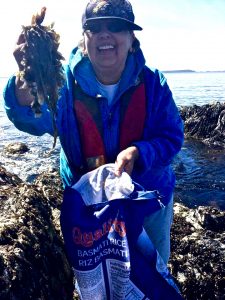 |
|
Mavis harvesting seaweed. The Heiltsuk are
traditionally a seafaring people; from April to
late May, tribal members sail out to pick seaweed.
|
Mavis lives in Bella Bella, British Columbia, Canada, on an island north of Vancouver and south of Alaska. Mavis is a member of the Heiltsuk First Nation. The Heiltsuk People have inhabited the central coast of British Columbia for 14,000 years. Today 1200 tribal members live on the Heiltsuk reserve and 900 live off reserve. Mavis is the head social worker for her tribe, and in this capacity has instituted summer camps for young people to learn about and preserve traditional tribal skills and language. Talk to Mavis, and she can tell you all about Heiltsuk festivals, traditional foods, medicine and dress. Listening to Mavis talk about her traditional tribal culture is an education.
Mavis completed her Masters degree in Applied Community Change and Conservation in 2007, graduating in Bhutan. Some of you may be acquainted with two additional members of Mavis’ family. Kelly Brown (class of 2005) is Mavis’ brother-in-law, and Lori Mason is her niece.
 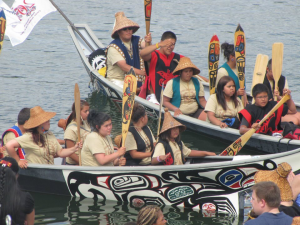 |
|
Traditional tribal journey from Bella Bella to Cowichan, and teaching the youth to preserve their traditions.
Mavis in traditional tribal dress.
|
You can find Mavis on Facebook, at Mavis J. Windsor.
__________________________
Meet Ellen Romm Lampert
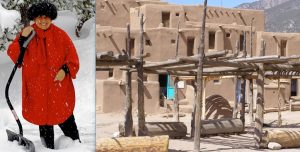 |
|
Ellen and the Taos Pueblo near where she
lives in New Mexico.
|
It is entirely possible that I am the oldest alum of Future Generations. The past 69 years have been action-packed. At present I live in Santa Fe, New Mexico. A lot of people, Americans included, have no idea that New Mexico is in the geographical center of the U.S. The nation of Mexico is about a four-hour drive away from my home. We have a lot of bi-national families in our geography and, as these people often say, “We never crossed the border, it crossed us!”
I completed my Master’s degree in Applied Community Change and Conservation in the class of 2007, graduating in Bhutan. My thesis was on the border problems we currently experience on the New Mexico / Mexico border. As a state in the U.S., New Mexico is an anomaly. In addition to our two official languages – English and Spanish – our election ballots include four indigenous languages. Until recently I was a consultant to the U.S. Department of State’s International Visitor Leadership Program (IVLP), the largest official professional exchange program run by the U.S. government. My job was to make appointments for special guests of the U.S. government and escort them to meet their counterparts in New Mexico, and then write up the summaries of their visits. These visits were generally of 5 days duration. During my years with the IVLP, I was in charge of groups from Asia, Africa, and Central and South America. The groups consisted of anywhere from two to twenty guests who were invited on a tour of 4 – 5 cities. Every few months I visited the agencies in Washington D.C. responsible for the overall tours for these guests, to assess the agenda requirements for each visit.
Like many Americans, I have lived a transient life. Originally, I am from Hollywood, California and I attended university in Mexico City, and lived in Japan and worked in West Africa and South America. Returning to Los Angeles in the 1980s, I worked as a California Arts Council Artist-in-Social Institutions – working in the juvenile prison system, running a wall murals project. After leaving Los Angeles definitively, I spent 16 years in Germany, where I was initially a professor of visual arts at the University of Cologne, and then foreign languages editor at Ballett International, and finally the CEO of a company I built in the foreign-languages sector. In 2000 I returned to the U.S., wondered where I should live, and landed in Santa Fe.
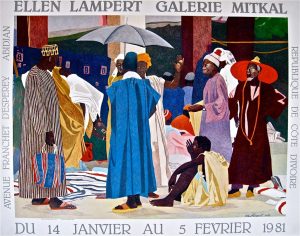 |
| Work from when Ellen was living in Abidjan in 1981. |
 |
|
Ellen’s prison students in California, 1987.
|
 |
|
In 1990 in Hanover, Germany, Ellen (bottom right) worked with this
group of high school students to create a mural at a train station.
|
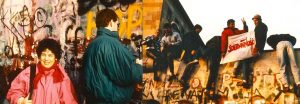 |
|
Ellen on the day the Berlin Wall came down– she had been lecturing
nearby, so she and her daughter made a trip to watch.
|
So what do I do now, here in Santa Fe, with a degree in Applied Community Change and Conservation? I run Slow Food Santa Fe. We are members of the international Slow Food organization, headquartered in Italy. The overall mission of Slow Food is, “Good, Clean and Fair.” Our specific mission in Santa Fe is food literacy, that is to say, education about accessible nutrition and localized consumption. My state, New Mexico, is the poorest state in the U.S. and New Mexico is an agrarian state, with a normal rainfall of only 7 inches per year. With such a restricted water supply, our farmers are very adept at what is called “dry farming,” but they do not produce enough crop to make New Mexico food sovereign. Food and water security, and chronic hunger, are big and constant topics in New Mexico. We do have a complete system of organic farmers’ market, supported by the state government. That is a start. And we have a great crew of people who work on maintaining the watershed. The autonomous indigenous nations in New Mexico (there are 19 of them) have begun to make themselves food sovereign. It is perhaps easier in that context, because these indigenous nations are so tiny. My group is involved in disseminating information and fomenting discussion about the best way to access and maintain optimal nutrition.
You can find me on Facebook at Ellen Romm Lampert.
__________________________
Many thanks to Ellen for putting together this week’s entry and for sharing even more of the Future Generations Family with us!










